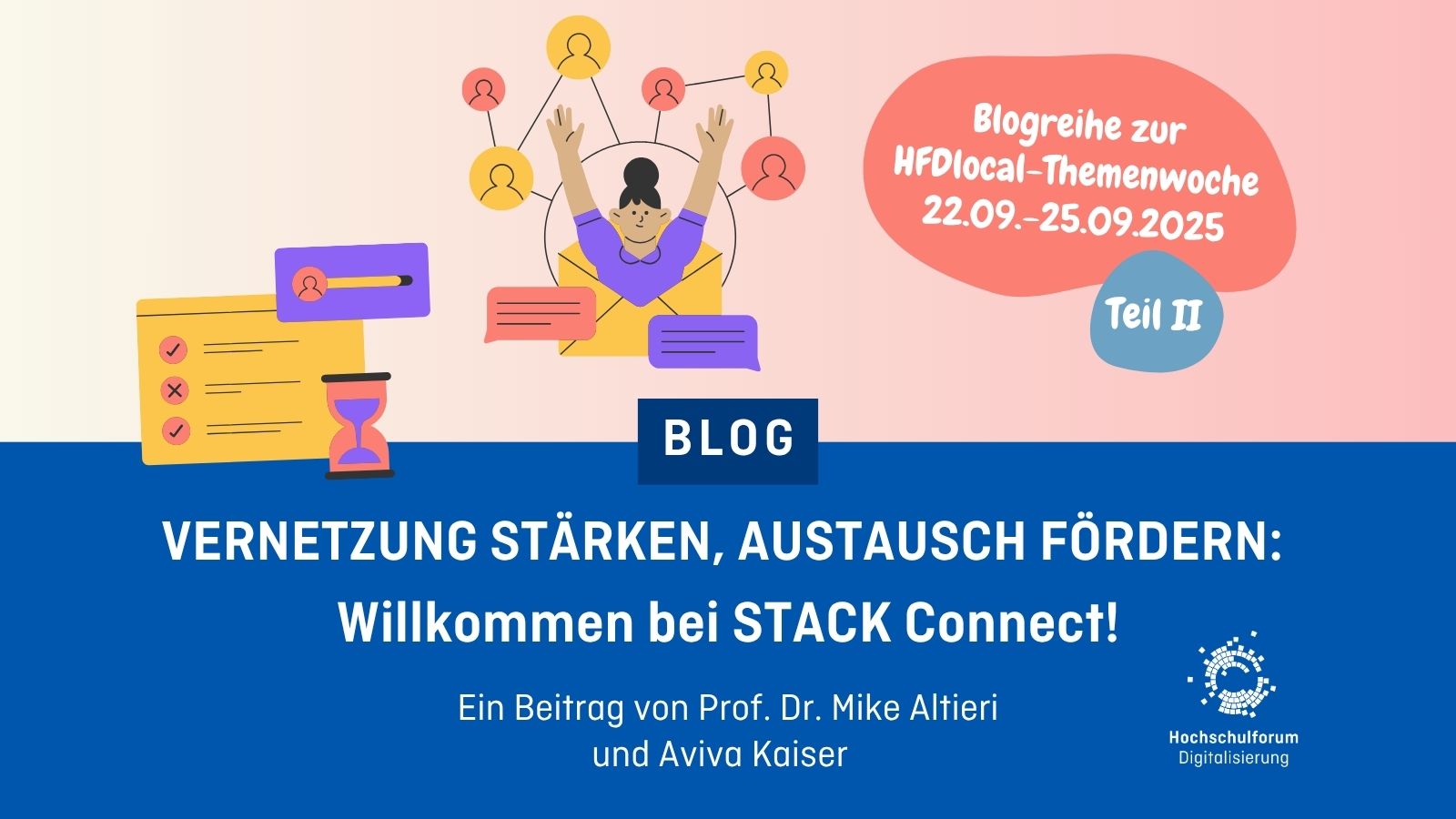Yes, we can. – Seven thoughts and impulses from the garden EDEN
Yes, we can. – Seven thoughts and impulses from the garden EDEN
31.08.23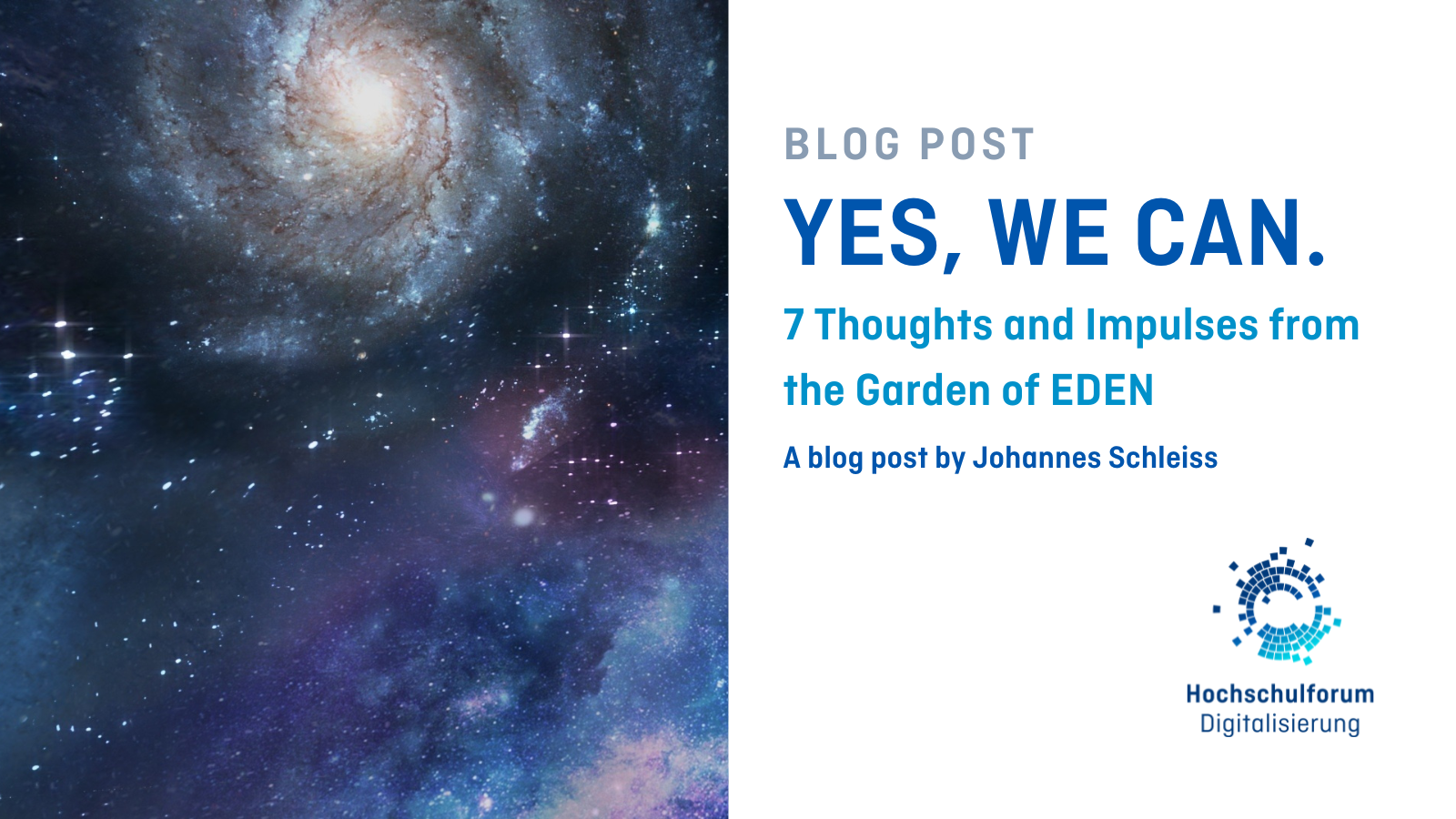
At the last annual conference of EDEN, the European Network for Digital Education, the motto was “Yes, we can” – Digital Education for a Better Future. Johannes Schleiss was in Dublin for us and draws seven important lessons from the presentations.
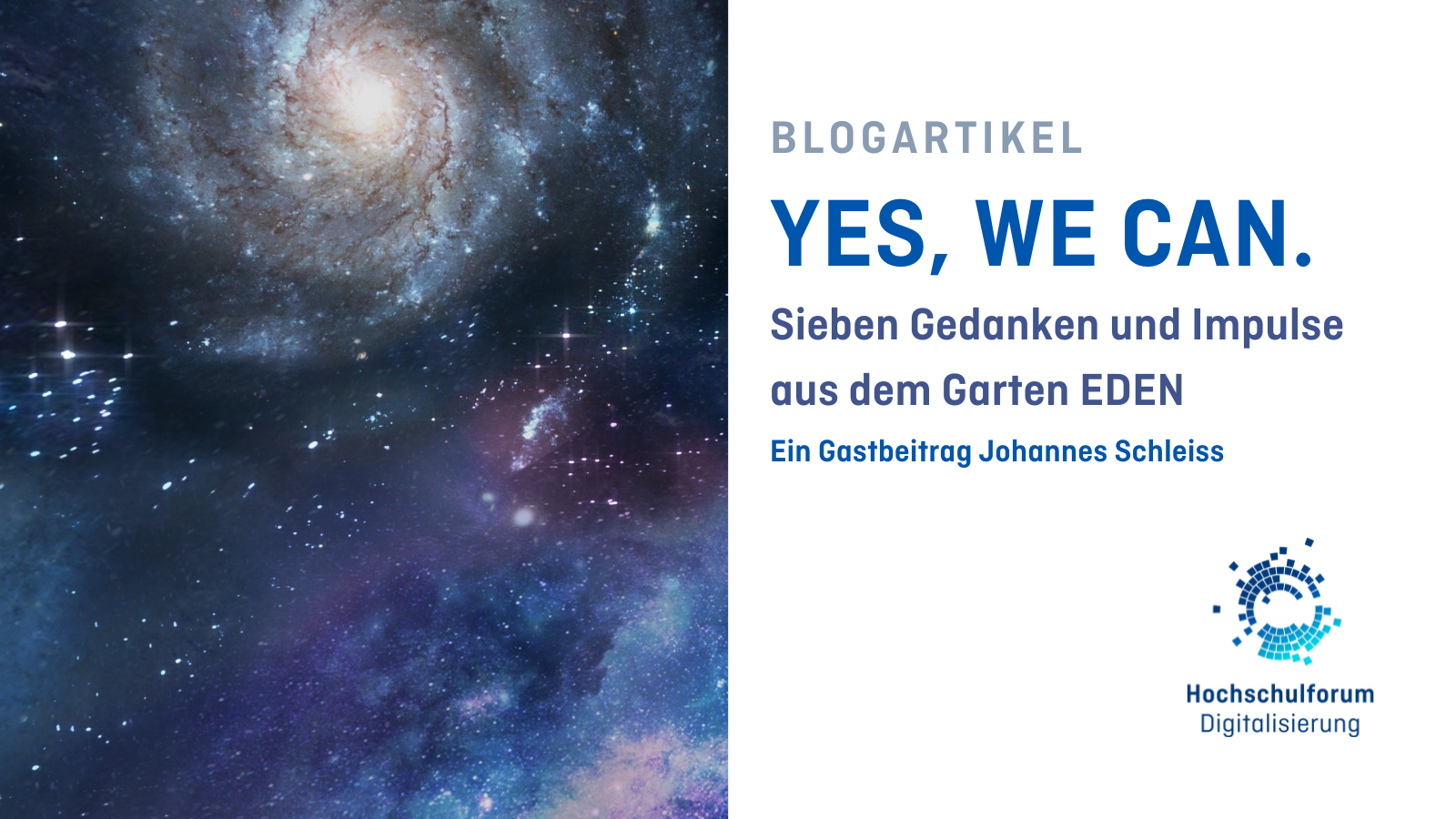
“Yes, we can” was this year’s motto of the annual conference of EDEN, the European Network for Digital Education. With 324 participants from 35 countries and more than 200 contributions, it offered a wide range of insights into the current state of digital education and its future developments. I would like to share seven impulses from some of the thought leaders:in this field and interesting discussions I have had. These are some fresh ideas, questions we should all be asking ourselves, and ripe fruit from EDEN’s garden.
1. we should shift the discussion of education away from meeting needs and toward hopeful dreams.
This phrase sums up what Rikke Toft Nørgård of the Danish School of Education at Aarhus University calls a “hopepunk philosophy for education.”
Following Alexandra Rowland, the idea of hopepunk states. “Courage and strength requires truly and sincerely caring about something. Hopepunk is never about submission or acceptance: it’s about standing up and fighting for what you believe in. It’s about standing up for other people. It’s about demanding a better, kinder world, and believing that if we take care of each other as best we can, with every drop of strength in our little hearts, we can achieve it.”
If we apply this to education, we can ask ourselves why education exists at all and what value it has for us. In her work, Rikke Toft Nørgård encourages people to think, speculate, and dream together about the future of education – a method that philosophers of education refer to as speculative education literature in critical education studies. Speculative education literature emphasizes radical imagination, hope, and new ideas around transforming universities and the education system. So let’s take some time and space to dream!
2. change must be conscious and systematic.
A wonderful figure of speech comes from Alexandra Mihai of Maastricht University:
“Universities are ecosystems: Knowledge flows, things grow and are in motion. Everything is interconnected. But like any ecosystem, we need support to keep it in balance, and that support is often complex and complicated.”
When we want to change a university, we run into disciplinary silos, different barriers (systems, habits, flexibility), and cultures. Implementing sustainable change processes requires a deliberate and systematic approach to change. By having cross-functional individuals work together on projects, find common ground, learn from each other, and create networks of change, we can overcome these barriers and foster a transformative environment within the university.
3. the integration of technologies such as AI offers an opportunity to redefine the education system and reposition universities in society.
The world is becoming more and more complex. Scientific and technological progress is accelerating. In light of this rapid pace, Angels Fito, president of the Universitat Oberta de Catalunya, explained her vision for repositioning the role of universities in society. In her words, “We need to put the learning space front and center and make universities places of action, creation and impact.”
This quickly leads to many questions: What challenges does this pose for universities? How should they change to maximize their contribution? How can universities add value to society, e.g. through better integrability in the labor market and lifelong learning? How can we better showcase the flexibility of lifelong learning?
In terms of technology, Angels Fito pointed out that the integration of technology such as AI offers a good opportunity to redefine the foundations of education. Moving from linear paths to open-loop portfolios would allow for more mobility and flexibility. This vision must take into account recognition of previous work, traceability, and complementarity between programs and modules. In summary, we need to make transitions within higher education and between work and higher education easy and possible.
For all of this to succeed, three key elements are needed: we need technology to improve the educational experience, we need a research ecosystem to understand and change the world, and we need alliances to solidify a systematic approach.
4. pay attention to the context and all the components!
We often get caught up in trends, buzzwords and superficial conversations without truly understanding the underlying nuances of a topic. Maren Deepwell, CEO of the Association of Learning Technology (ALT), shared insights from the ALT2023 survey. The biggest challenges associated with digital transformation include time, strategy, and the leadership and culture of higher education institutions, with assessment, collaboration, and blended learning being top priorities.
An interesting but not surprising finding was the importance of context. This shows that translating and transferring a solution that works in one institution or context requires special time, effort and understanding of nuances in another context.
Last but not least, another interesting and timely aspect to explore is the ALT Framework of Ethical Learning Technology, a self-reflection framework developed by the community.
5. we need to put more emphasis on systematic evidence synthesis.
Another highlight for me was meeting Melissa Bond from University College London and hearing her perspective on education. A key phrase for me was:
“When we analyze education, we shouldn’t look at any study in isolation, but look at the totality of the evidence and include the context in which the work was done.”
This distills the evidence that certain inventions and interventions in education serve as important building blocks for the development of a better educational future. We often talk about building a more evidence-based education, but we should also make the effort to actually look at multiple studies and synthesize evidence. Melissa’s work on systematic evidence synthesis is truly inspiring, see for yourself.
6. change is the new normal. We need more collaboration and vulnerability.
The burden on teachers remains high: they face major challenges such as new demands for flexibility and the student learning experience, as well as exponentially increasing technological advances and a widening digital divide. So how can we lighten the load on faculty shoulders and keep everyone in balance?
A legitimate and difficult question, to which there is no simple answer. Some of the ideas discussed in the panel discussion were: Team teaching, developing peer assessment, collaborating (and co-creating) with students, and building complementary teams.
One aspect that also fits well in this context is vulnerability and creating a stable environment to explore ambiguity and uncertainty. What is the role of a teacher? What are the different aspects of the role? How might the role change in the future? Being a university teacher does not mean knowing everything or understanding everything. I can only encourage this: try new things together with your students and colleagues, be open and honest about where you stand, and learn together. Knowledge is available everywhere, as a teacher you guide through the path of uncertainty and newness.
7. we must create space and time to talk about the future we want to create.
When was the last time you talked about your team’s or organization’s vision? Far too often we go about our daily, weekly and monthly tasks. New semester, new class, projects and research. The presentations and discussions at the conference demonstrated the importance of taking a step back from time to time, realigning the North Star of a desirable future, and focusing on shaping a future of higher education that truly inspires us. The appropriate design format for this may vary.
We have had positive experiences using the co-creation approach to help teams design and develop alternative futures. As part of the conference theme, we presented our work with two cohorts of the HFDvisions project, in which we collaborated with 11 institutions in Germany.
Our research focused on examining the impact of providing external methodological support for collaborative vision development through a multi-stakeholder approach. Particular attention was paid to perceived benefits, challenges, critical success factors, and student participation.
Our experience has shown that several key factors contribute to the successful execution of co-creative processes. These include a well-structured program, the availability of methodological support, and the establishment of a strong network for knowledge sharing and collaboration. Participation is proving to be a critical aspect of creating better visions for the future of higher education. By engaging diverse stakeholders, including students, in the co-creation process, institutions can develop more inclusive and relevant visions. We observed how the co-creation process facilitated team building, fostered alignment and stakeholder engagement, and provided a sense of ownership in the visioning process.
Overall, our case study provides valuable insights into the potential of co-creation in envisioning a better future for higher education. It also provides practical guidance for institutions seeking to implement this approach effectively. By adopting a co-creation strategy, colleges can work to create a better and more purposeful future for their communities.
What can we learn from this?
Now is the time to develop a shared vision for education and our institutions of the future. This creation should be inspired by hope and opportunity, not fear and pessimism. At the same time, change must be deliberate and systematic, and we must create space and time to think and discuss the future we must create. We need to gain stronger insights into specific educational structures and approaches, and incorporate the full range of ideas and opinions.
Therefore, I urge each of you to take action now. Embrace the Hopepunk philosophy for education, drive change purposefully and systematically, integrate technology thoughtfully, prioritize evidence synthesis, value all constituents, foster collaboration, and create the space to dream and build the future of education.
Together, we are shaping the future of education with “Yes, we can” and paving the way for a kinder, more inclusive and transformative world. Let’s stand up, fight for what we believe in, and demand a better future for education. The time to act is now.


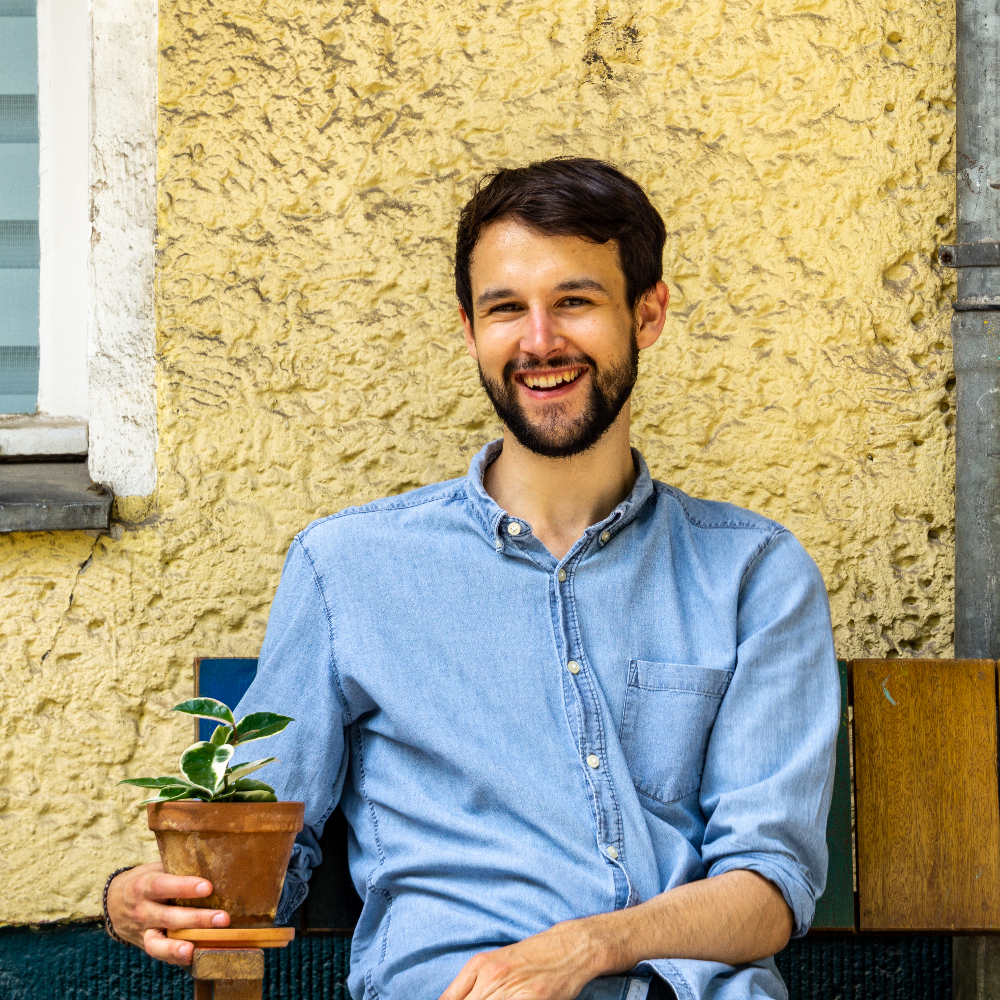
 Sebastian Horndasch
Sebastian Horndasch 
 Lucas Jacobsen
Lucas Jacobsen 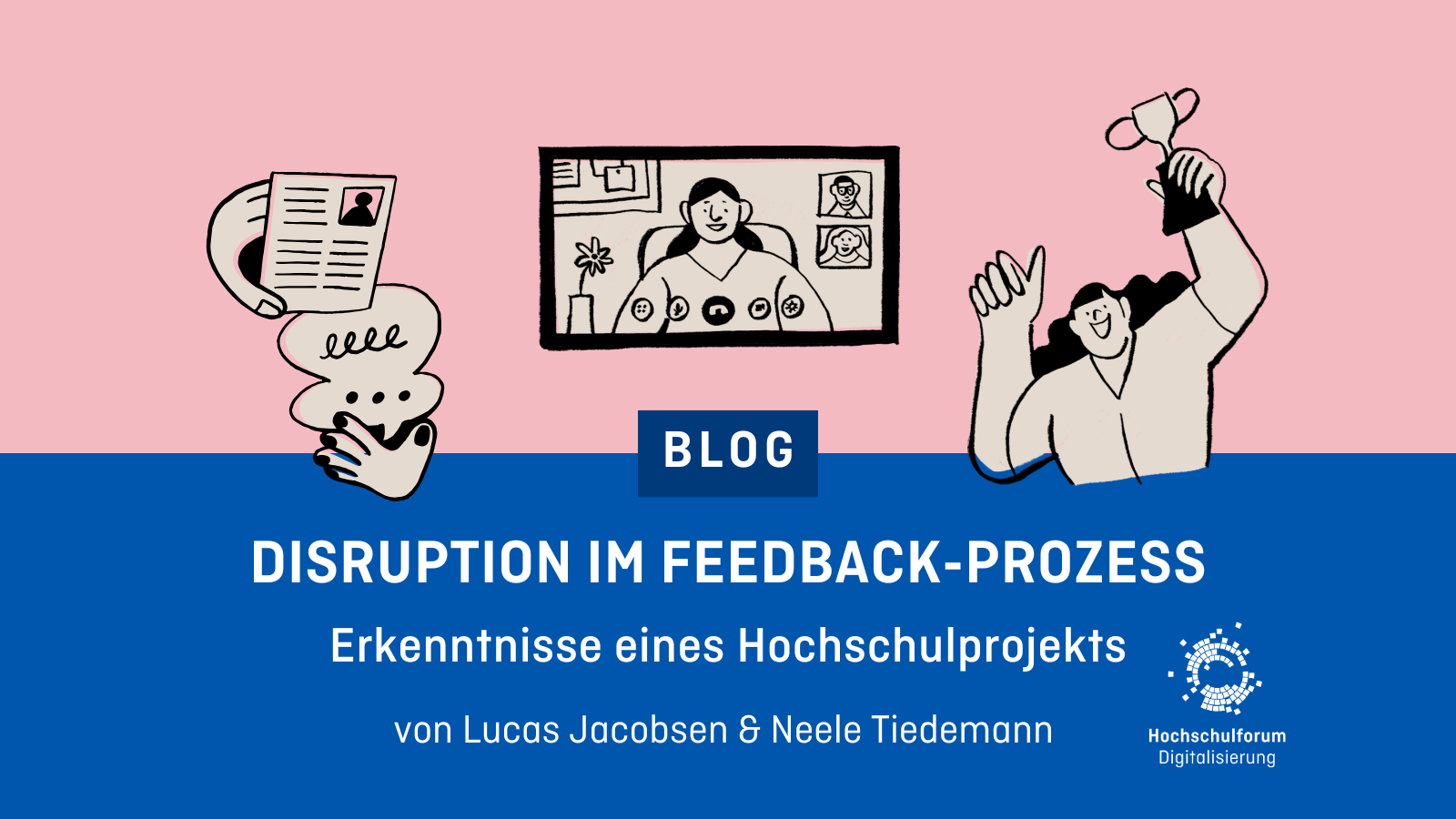
 Prof. Dr. Mike Altieri
Prof. Dr. Mike Altieri 